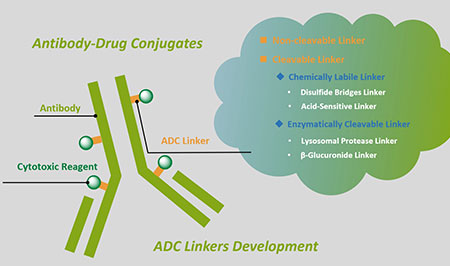1. Ado-Trastuzumab Emtansine for Patients With HER2-Mutant Lung Cancers: Results From a Phase II Basket Trial
Bob T Li, Jose Baselga, Michael Offin, Fabiola Cecchi, David M Hyman, Daniel Feldman, Michelle S Ginsberg, Nick Pavlakis, Maurizio Scaltriti, Mark G Kris, Michael F Berger, Stephen Clarke, Maria E Arcila, Darren Buonocore, Sarit Schwartz, Gregory J Riely, Helen H Won, Alexander Drilon, Edyta B Brzostowski, Ronglai Shen, Todd Hembrough, Charles M Rudin, Zachary T Olah, David B Solit, Ai Ni, Gary A Ulaner J Clin Oncol . 2018 Aug 20;36(24):2532-2537. doi: 10.1200/JCO.2018.77.9777.
Purpose Human epidermal growth factor receptor 2 ( HER2, ERBB2)-activating mutations occur in 2% of lung cancers. We assessed the activity of ado-trastuzumab emtansine, a HER2-targeted antibody-drug conjugate, in a cohort of patients with HER2-mutant lung cancers as part of a phase II basket trial. Patients and Methods Patients received ado-trastuzumab emtansine at 3.6 mg/kg intravenously every 3 weeks until progression. The primary end point was overall response rate using Response Evaluation Criteria in Solid Tumors (RECIST) version 1.1. A Simon two-stage optimal design was used. Other end points included progression-free survival and toxicity. HER2 testing was performed on tumor tissue by next generation sequencing, fluorescence in situ hybridization, immunohistochemistry, and protein mass spectrometry. Results We treated 18 patients with advanced HER2-mutant lung adenocarcinomas. The median number of prior systemic therapies was two (range, zero to four prior therapies). The partial response rate was 44% (95% CI, 22% to 69%), meeting the primary end point. Responses were seen in patients with HER2 exon 20 insertions and point mutations in the kinase, transmembrane, and extracellular domains. Concurrent HER2 amplification was observed in two patients. HER2 immunohistochemistry ranged from 0 to 2+ and did not predict response, and responders had low HER2 protein expression measured by mass spectrometry. The median progression-free survival was 5 months (95% CI, 3 to 9 months). Toxicities included grade 1 or 2 infusion reactions, thrombocytopenia, and elevated hepatic transaminases. No patient stopped therapy as a result of toxicity or died on study. Conclusion Ado-trastuzumab emtansine is an active agent in patients with HER2-mutant lung cancers. This is the first positive trial in this molecular subset of lung cancers. Further use and study of this agent are warranted.
2. HER2-positive gastric cancer
Narikazu Boku Gastric Cancer . 2014 Jan;17(1):1-12. doi: 10.1007/s10120-013-0252-z.
Human epidermal growth factor receptor 2 (HER2) is involved in the pathogenesis and poor outcomes of several types of cancer, including advanced gastric and gastroesophageal junction cancer. Molecular-targeted drugs, such as trastuzumab, which prolong overall survival and progression-free survival in HER2-positive breast cancer, may also be beneficial in patients with HER2-positive gastric cancer. Several studies have examined this possibility, such as the Trastuzumab for Gastric Cancer trial. In this context, the first part of this review provides an update on our knowledge of HER2 in breast and gastric cancer, including the detection and prognostic relevance of HER2 in gastric cancer. The second part of the review discusses the results of pivotal clinical trials that examined the potential for using trastuzumab to treat this disease. This section also summarizes the trials that have been conducted or that are underway to determine the optimal uses of trastuzumab in gastric cancer, including its use as monotherapy and continuation beyond disease progression. The final section discusses the future prospects of other anti-HER2 drugs, including lapatinib, trastuzumab emtansine, and pertuzumab, for the treatment of HER2-positive gastric cancer. The introduction of trastuzumab led to the establishment of a new disease entity, "HER2-positive gastric cancer," similar to HER2-positive breast cancer. It is expected that more anti-HER2 drugs will be developed and introduced into clinical practice to treat HER2-positive cancers, including gastric cancer.
3. Trastuzumab emtansine: mechanisms of action and drug resistance
Mark Barok, Jorma Isola, Heikki Joensuu Breast Cancer Res . 2014 Mar 5;16(2):209. doi: 10.1186/bcr3621.
Trastuzumab emtansine (T-DM1) is an antibody-drug conjugate that is effective and generally well tolerated when administered as a single agent to treat advanced breast cancer. Efficacy has now been demonstrated in randomized trials as first line, second line, and later than the second line treatment of advanced breast cancer. T-DM1 is currently being evaluated as adjuvant treatment for early breast cancer. It has several mechanisms of action consisting of the anti-tumor effects of trastuzumab and those of DM1, a cytotoxic anti-microtubule agent released within thetarget cells upon degradation of the human epidermal growth factor receptor-2 (HER2)-T-DM1 complex in lysosomes. The cytotoxic effect of T-DM1 likely varies depending on the intracellular concentration of DM1 accumulated in cancer cells, high intracellular levels resulting in rapid apoptosis, somewhat lower levels in impaired cellular trafficking and mitotic catastrophe, while the lowest levels lead to poor response to T-DM1. Primary resistance of HER2-positive metastatic breast cancer to T-DM1 appears to be relatively infrequent, but most patients treated with T-DM1 develop acquired drug resistance. The mechanisms of resistance are incompletely understood, but mechanisms limiting the binding of trastuzumab to cancer cells may be involved. The cytotoxic effect of T-DM1 may be impaired by inefficient internalization or enhanced recycling of the HER2-T-DM1 complex in cancer cells, or impaired lysosomal degradation of trastuzumab or intracellular trafficking of HER2. The effect ofT-DM1 may also be compromised by multidrug resistance proteins that pump DM1 out of cancer cells. In this review we discuss the mechanism of action of T-DM1 and the key clinical results obtained with it, the combinations ofT-DM1 with other cytotoxic agents and anti-HER drugs, and the potential resistance mechanisms and the strategies to overcome resistance to T-DM1.







